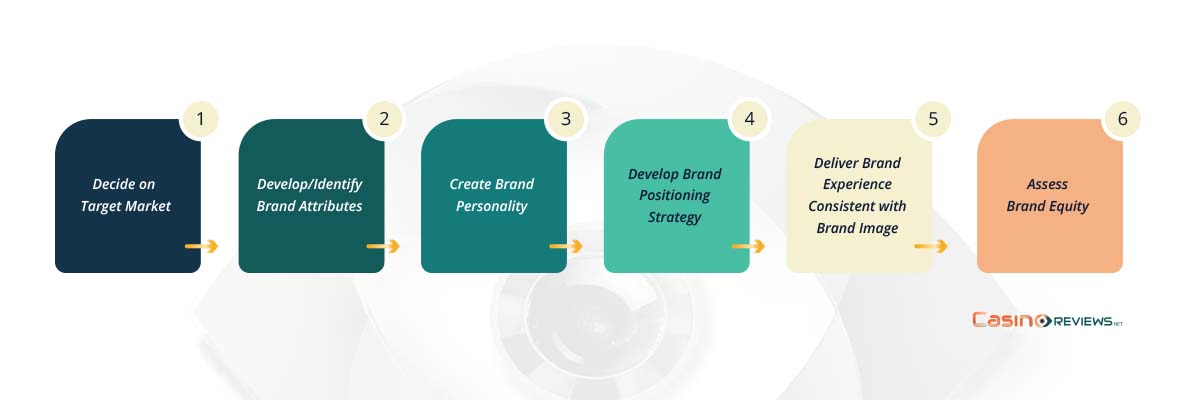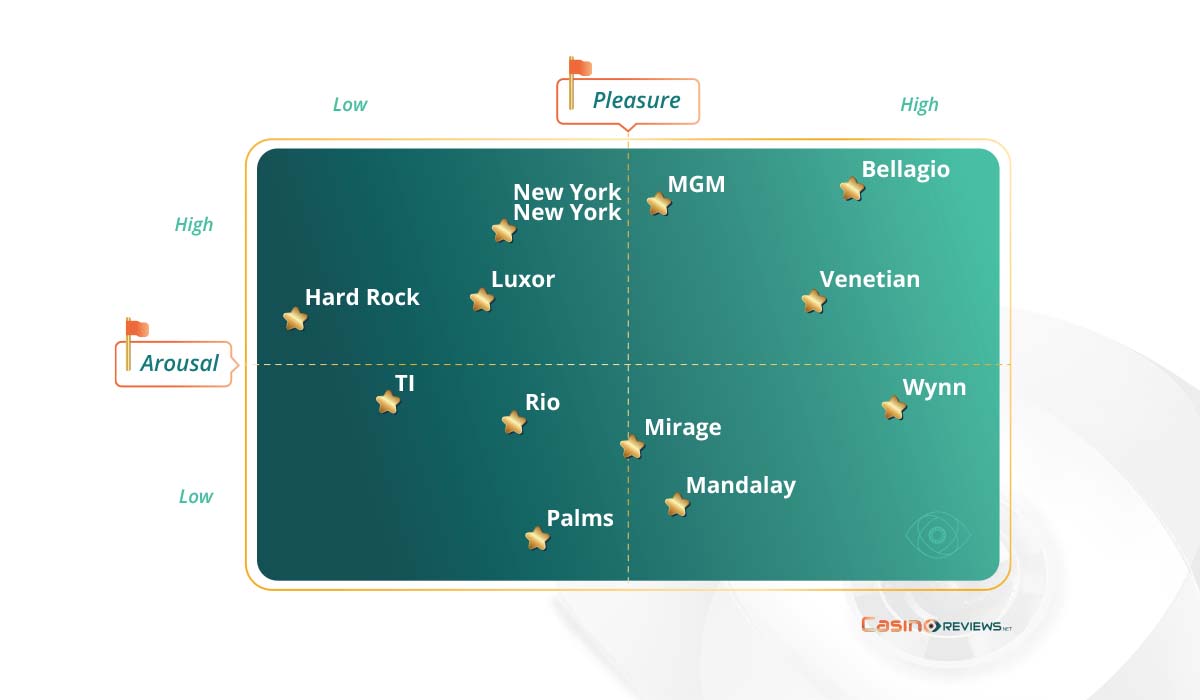How to Brand Your Casino for Creating Brand Equity and Enhancing Profitability

A brand, usually comprised of a name or symbol, is a promise to deliver specific benefits to consumers. The brand typically comprises several layers such as brand personality, characteristics, and associations. When correctly orchestrated, a brand creates a distinct and compelling position in the minds of the target market, thus creating brand equity. The higher the equity of a brand, the more profitable the branded product becomes for a company. Typically, casinos don’t fully appreciate the power of branding. This article explains the six steps casinos could use to create a powerful brand.
Branding Concepts Applied to Casinos
Casinos spend a significant portion of their revenues on marketing-related activities. The industry invests a lot on hiring and training of casino hosts, on administering their loyalty programs, and on advertising and public relations. One area where the casino industry seems to be wanting in expertise and execution is branding. In over three decades of my involvement in the industry, I have yet to come across a truly memorable branding campaign.
While branding is an important component of successful marketing of all products, it is of particular significance in a service business such as a casino. All casinos have pretty much the same products (slots and tables), and the price of entertainment (the house edge) is also identical. Given the homogeneity of products, creating a powerful brand differentiates the casino from its competitors, thereby creating a strong and sustainable competitive advantage. To kickstart the branding process, key concepts in branding first need to be understood.
What Is Branding?
The term brand is based on the Nordic word brandr, meaning to burn. Brands began as a mark of possession that was first applied to cattle. Over a period of time, brands have evolved from a mere indicator of ownership to a bundle of attributes that, when correctly communicated, represent a promise to prospective buyers. Usually represented by a name (e.g., Intel) or a symbol (e.g., the golden arches of McDonald’s), the brand can be perceived positively, negatively, or ambivalently by consumers.
A powerful brand has high brand equity, the differential effect that knowing the brand name has on customers’ responses to the product and its marketing. Brand equity represents the power and the value held by a brand in the marketplace.
In cases of well-known global brands such as Coca-Cola and McDonald’s, the brand equity can be worth billions of dollars. McDonald’s brand was recently valued at around $155 bn! A former CEO of McDonald’s once said, “If every asset we own, every building, and every piece of equipment were destroyed in a terrible natural disaster, we would be able to borrow all the money to replace it very quickly because of the value of our brand… The brand is more valuable than the totality of all these assets.i”
Casino Branding
It looks like casinos seem to disproportionately focus on the design of their buildings when promoting their properties. The Paris Las Vegas Hotel & Casino, for example, prominently displays its replica of the Eiffel Tower in all its communications, while the Marina Bay Sands in Singapore uses the imagery of its three hotel towers in all marketing collateral. With the passage of time, the novelty of the hitherto iconic properties will wear out, and these properties will have to look for new signs and symbols with which to communicate their brand. We shall briefly discuss the steps involved in successful branding.
Figure 1 lists the sequence of steps involved in developing an end-to-end branding strategy. The end goal of all branding endeavors is to increase brand equity.

Figure 1: The Branding Process
1: Target Market
Any attempt at casino branding—online or land-based—should start with the target market in mind. With over 3,000 online gambling sites, over 140 casinos in Las Vegas alone, and 41 casinos in Macau, the casino space is getting decidedly crowded. The first important branding decision, and one from which most other decisions flow, is to decide on the target market the casino intends to serve.
Station Casinos, for instance, has decided to focus on the “locals” market in and around Las Vegas. While most other casino properties are busy chasing the tourist dollar, Station’s properties target local Las Vegas residents and workers.
According to the company, 80 percent of Las Vegas residents live within a five-mile radius of one of its casinos. Such strong identification with the target market allows Station Casinos to use appropriate local media and design a unique rewards program with the local residents in mind. Despite a relatively modest marketing spend, Station Casinos has created very high name recognition and enviable brand loyalty among its targeted customers. Station Casinos receives 70% of its revenue from local residents.
2: Brand Attributes
Having decided on the target market, a casino then needs to develop or identify its brand attributes. These are the brand’s distinctive characteristics and its core values. Brand attributes could include consistency, credibility, sustainability, relevancy, and appeal. Brand attributes for Marina Bay Sands, for example, are sophistication, style, and class. Attributes of the Circus Circus Hotel & Casino in Las Vegas, on the other hand, would include affordability and family fun. Marina Bay Sands and Circus Circus clearly cater to two very different target markets, and these differences need to be reflected in emphasizing the respective brand attributes and positioning.
3: Brand Personality
Research in consumer behavior reveals that consumers infuse brands with personalities and that brands could do the same to increase rapport with the target market. Brand personalities are underpinned by traits such as sincerity (Dove), excitement (Virgin), competence (Deutsche Bank), sophistication (Louis Vuitton), sexiness (Victoria’s Secret), and ruggedness (Marlboro)ii. Wynn Resorts in Las Vegas has successfully used the trait of sincerity in its commercials during COVID-19.
Another good example from the gambling world is Crown Resorts in Melbourne, who have routinely used excitement to define its brand personality.
4: Brand Positioning
Brand positioning is the place a brand occupies in the minds of its target consumers relative to competing and substitute brands. Positioning is the result of a complex set of consumer perceptions, impressions, and feelings associated with a particular product/service.
The starting point for brand positioning is brand identity, the way in which any business perceives its brand. Brand identity is the collection of all elements that a company creates to portray the right image to its consumer. Usually, there is a considerable discrepancy between brand identity and brand positioning.
For example, the brand identity of a casino in the eyes of management may be characterized by sportiness and fun. The actual brand position, however, may be perceived as being low arousal and lackluster. Similar to the notion of image, positioning can be based on cognitive/functional and affective/symbolic attributes.
However, where possible, emotional positioning is recommended. Consumers are looking to make connections with brands, and Nielsen research suggests that emotional ads perform 2.5 times better than ads based on attributes. When it comes to the positioning of a brand, marketers, at best, have limited control over how customers perceive their brand. Positioning ultimately happens in the minds of the target market.
Figure 2 illustrates the perceptual map of twelve casinos in Las Vegas. The map depicts how consumers picture each casino in isolation and in relation to one another along two main dimensions—pleasure and arousal. Based on these findings, it would be almost impossible for Hard Rock Casino to try to appeal to Wynn’s customers and vice versa. The two casinos occupy diagonally opposite positions.

Figure 2: Positioning of Twelve Casino Brands in Las Vegas
Source: Ro, Heejung, Suna Lee, and Anna Mattila (2013), “An Affective Image Positioning of Las Vegas Hotels,” Journal of Quality Assurance in Hospitality & Tourism, 14, 201-217.
5: Delivering Brand Experience
Nothing destroys brand equity more than delivering a customer experience that is at odds with the brand image. The customer experience needs to be crafted in such a way that the brand’s personality comes across at most touchpoints along the customer journey. The experience should be underpinned by the brand’s values and geared toward the brand’s desired positioning. In the delivery of customer experience, there should be a singular focus on consistency and authenticity. The brand should always deliver what it promises to deliver.
When a brand consistently delivers on its promise, brand associations are strengthened, and brand loyalty develops. Brand loyalty has two components: purchase loyalty and attitudinal loyalty. Attitudinal loyalty leads to customer tolerance of higher prices, while purchase loyalty increases the brand’s market share. Both these factors combine to enhance brand profitability.
6: Assessing Brand Equity
Brand equity has been defined as “a set of assets and liabilities linked to a brand’s name or symbol that adds (or subtracts from) the value provided by a product or a service to a firm and/or that firm’s customers.” Brands, therefore, are reputational assets that can benefit or harm a firm’s offering. In assessing brand equity, a casino should focus on three main audiences: customers, financial markets, and employees.
Customer-based brand equity is the differential effect of brand knowledge on consumer response to the brand. Financial-based brand equity is the differential effect of the brand on the firm’s balance sheet. The strength of a brand plays a significant role in the market capitalization of the company’s stock prices.
Finally, employee-based brand equity is the differential effect of the brand on current and potential employees. Often, employees associate their personal brand with the brands of the company they work for. Having a strong employer brand attracts quality workforce and increases employee retention.
Assessing brand equity typically requires a detailed brand audit which involves surveying stakeholder perceptions, studying consumer contexts, understanding customer goals, and aligning employees’ interests and passions with brand values such that employees genuinely live the ethos of the brand. Periodic brand audit ensures consistency between brand promise and brand experience for all key constituencies.
Conclusion
Brands are more than mere names and symbols. They are powerful assets that must be carefully developed and managed. Brands represent consumers’ perceptions and feelings about a product and its performance. In this regard, brands reside in the heads of consumers.
Overall, casinos do less than an adequate job of branding their properties. Little thought seems to be given to key issues such as brand personality, brand image, and positioning. Branding efforts seem to be haphazard and lagging in priority compared to other marketing initiatives.
When correctly performed, branding can bestow sizeable contributions to a casino’s revenues and profitability. The six-step branding process discussed in this article should further senior management’s understanding of and interest in branding strategy.
COVID-19 has provided excellent opportunities for casinos to revisit, and if necessary, overhaul their branding strategy. The target market has changed for many casinos, both online and land-based. New customers bring new priorities and expectations. Even existing customers are thinking differently about their relationship with the casinos they frequent.
Now is the time to take stock of customer characteristics, needs, and wants. Such refreshed customer understanding should lead to a reassessment of the brand’s desired attributes, its personality, and positioning. Casino firms that pivot their branding strategy in the wake of the current crisis will be the ones that ultimately succeed in establishing a long-term consumer franchise.
i“McAtlas Shrugged,” Foreign Policy, May-June 2001, pp.26-37.
iiBeverland, Michael, Brand Management: Co-creating Meaningful Brands, 2018, Sage Publications.





Review this Blog
Leave a Comment
User Comments
comments for How to Brand Your Casino for Creating Brand Equity and Enhancing Profitability